Digital Frequency Synthesis Demystified : DDS and Fractional-N PLLsBar-Giora Goldberg · In-depth coverage of modern digital implementations of frequency synthesis architectures
· Numerous design examples drawn from actual engineering projects
· The accompanying CD includes digital frequency synthesis design tools and an electronic version of the book
Digital frequency synthesis is used in modern wireless and communications technologies such as radar, cellular telephony, satellite communications, electronic imaging, and spectroscopy. This is book is a comprehensive overview of digital frequency synthesis theory and applications, with a particular emphasis on the latest approaches using fractional-N phase-locked loop technology. The design tools in the accompany CD allow readers to work through the examples in this book for a realistic simulation of actual design using digital frequency synthesis.
· In-depth coverage of modern digital implementations of frequency synthesis architectures
· Numerous design examples drawn from actual engineering projects
· The accompanying CD includes digital frequency synthesis design tools and an electronic version of the book Raspberry Pi Networking Cookbook - Second EditionRick Golden Key Features Install, administer, and maintain your Raspberry PiExplore a new world of computing with this low cost, credit-card sized computerConnect your Raspberry Pi to other devices on local networks and utilise IoT servicesBook Description
With increasing interest in Maker Projects and the Internet of Things (IoT), students, scientists, and hobbyists are using the Raspberry Pi as a reliable, inexpensive platform to connect local devices to Internet services.
This book begins with recipes that are essential to installing the Raspberry Pi and configuring it for network access. Then it continues with recipes on installing common networking services such as firewalls and file sharing.
The final chapters include recipes for network monitoring, streaming data from the Raspberry Pi to IoT services, and using clusters of Raspberry Pis to store and analyze large volumes of data. What you will learn Install, update, and upgrade your Raspberry PIConfigure a firewall to protect your Raspberry Pi and other devices on your local area networkSet up file sharing, remote access, a web server, and your own wikiCreate a wireless access point and use it as an Internet gatewayStream video, audio, and local device data to IoT services as well as your own websitesControl devices connected to the Raspberry Pi from your phone via the webCreate a giant video wall using multiple monitors and Raspberry PisAbout the Author
Rick Golden, in the summer of 1972, sat in the computer lab at SUNY Fredonia and completed his first CAI tutorial on programming in APL. He was 9 years old then.
He has been programming computers for over 40 years. He has designed and developed a multitude of projects, from low-level graphics and database drivers to large-volume e-commerce platforms.
At work, Rick is currently focused on developing software to improve healthcare by mining petabytes of healthcare claims to find opportunities to improve healthcare coordination. After work, Rick teaches 10-14 year olds how to program using Raspberry Pi computers. Table of Contents Installation and SetupAdministrationMaintenanceFile SharingAdvanced NetworkingIoT – Internet of ThingsClustering Learn Computer Vision Using OpenCV: With Deep Learning CNNs and RNNsSunila Gollapudi Build practical applications of computer vision using the OpenCV library with Python. This book discusses different facets of computer vision such as image and object detection, tracking and motion analysis and their applications with examples.
The author starts with an introduction to computer vision followed by setting up OpenCV from scratch using Python. The next section discusses specialized image processing and segmentation and how images are stored and processed by a computer. This involves pattern recognition and image tagging using the OpenCV library. Next, you’ll work with object detection, video storage and interpretation, and human detection using OpenCV. Tracking and motion is also discussed in detail. The book also discusses creating complex deep learning models with CNN and RNN. The author finally concludes with recent applications and trends in computer vision.
After reading this book, you will be able to understand and implement computer vision and its applications with OpenCV using Python. You will also be able to create deep learning models with CNN and RNN and understand how these cutting-edge deep learning architectures work.
What You Will LearnUnderstand what computer vision is, and its overall application in intelligent automation systems
Discover the deep learning techniques required to build computer vision applications
Build complex computer vision applications using the latest techniques in OpenCV, Python, and NumPy
Create practical applications and implementations such as face detection and recognition, handwriting recognition, object detection, and tracking and motion analysis
Who This Book Is ForThose who have a basic understanding of machine learning and Python and are looking to learn computer vision and its applications. Practical Machine LearningSunila Gollapudi This book has been created for data scientists who want to see machine learning in action and explore its real-world application. With guidance on everything from the fundamentals of machine learning and predictive analytics to the latest innovations set to lead the big data revolution into the future, this is an unmissable resource for anyone dedicated to tackling current big data challenges. Knowledge of programming (Python and R) and mathematics is advisable if you want to get started immediately. Embedded Linux Projects Using Yocto Project CookbookAlex Gonzalez Over 70 hands-on recipes for professional embedded Linux developers to optimize and boost their Yocto know-howAbout This Book Explore best practices for all embedded product development stagesUse what is quickly becoming the standard embedded Linux product builder framework, the Yocto ProjectEasy to follow guide to solve all your project woesWho This Book Is For
If you are an embedded developer learning about embedded Linux with some experience with the Yocto project, this book is the ideal way to become proficient and broaden your knowledge with examples that are immediately applicable to your embedded developments. Experienced embedded Yocto developers will find new insight into working methodologies and ARM specific development competence. In Detail
The embedded Linux world is standardizing around Yocto Project as the best integration framework to create reliable embedded Linux products. Yocto Project effectively shortens the time it takes to develop and maintain an embedded Linux product, and it increases its reliability and robustness by using proven and tested components.
This book begins with the installation of a professional embedded Yocto setup, then advises you on best practices, and finally explains how to quickly get hands on with the Freescale ARM ecosystem and community layer, using the affordable and open source Wandboard embedded board. Deep LearningIan Goodfellow, Yoshua Bengio, Aaron Courville "Written by three experts in the field, Deep Learning is the only comprehensive book on the subject." — Elon Musk, cochair of OpenAI; cofounder and CEO of Tesla and SpaceX
Deep learning is a form of machine learning that enables computers to learn from experience and understand the world in terms of a hierarchy of concepts. Because the computer gathers knowledge from experience, there is no need for a human computer operator to formally specify all the knowledge that the computer needs. The hierarchy of concepts allows the computer to learn complicated concepts by building them out of simpler ones; a graph of these hierarchies would be many layers deep. This book introduces a broad range of topics in deep learning.
The text offers mathematical and conceptual background, covering relevant concepts in linear algebra, probability theory and information theory, numerical computation, and machine learning. It describes deep learning techniques used by practitioners in industry, including deep feedforward networks, regularization, optimization algorithms, convolutional networks, sequence modeling, and practical methodology; and it surveys such applications as natural language processing, speech recognition, computer vision, online recommendation systems, bioinformatics, and videogames. Finally, the book offers research perspectives, covering such theoretical topics as linear factor models, autoencoders, representation learning, structured probabilistic models, Monte Carlo methods, the partition function, approximate inference, and deep generative models.
Deep Learning can be used by undergraduate or graduate students planning careers in either industry or research, and by software engineers who want to begin using deep learning in their products or platforms. A website offers supplementary material for both readers and instructors. Artificial Intelligence for Robotics: Build intelligent robots that perform human tasks using AI techniquesFrancis X. Govers Bring a new degree of interconnectivity to your world by building your own intelligent robotsKey Features Leverage fundamentals of AI and roboticsWork through use cases to implement various machine learning algorithmsExplore Natural Language Processing (NLP) concepts for efficient decision making in robotsBook Description
Artificial Intelligence for Robotics starts with an introduction to Robot Operating Systems (ROS), Python, robotic fundamentals, and the software and tools that are required to start out with robotics. You will learn robotics concepts that will be useful for making decisions, along with basic navigation skills.
As you make your way through the chapters, you will learn about object recognition and genetic algorithms, which will teach your robot to identify and pick up an irregular object. With plenty of use cases throughout, you will explore natural language processing (NLP) and machine learning techniques to further enhance your robot. In the concluding chapters, you will learn about path planning and goal-oriented programming, which will help your robot prioritize tasks.
By the end of this book, you will have learned to give your robot an artificial personality using simulated intelligence. What you will learn Get started with robotics and artificial intelligenceApply simulation techniques to give your robot an artificial personalityUnderstand object recognition using neural networks and supervised learning techniquesPick up objects using genetic algorithms for manipulationTeach your robot to listen using NLP via an expert systemUse machine learning and computer vision to teach your robot how to avoid obstaclesUnderstand path planning, decision trees, and search algorithms in order to enhance your robotWho this book is for
If you have basic knowledge about robotics and want to build or enhance your existing robot's intelligence, then Artificial Intelligence for Robotics is for you. This book is also for enthusiasts who want to gain knowledge of AI and robotics. Table of Contents Foundation for Advanced Robotics and AISetting Up Your RobotA Concept for a Practical Robot Design ProcessObject Recognition Using Neural Networks and Supervised LearningPicking up the ToysTeaching a Robot to ListenAvoiding the StairsPutting Things AwayGiving the Robot an Artificial PersonalityConclusions and ReflectionsAssessments | Processing 2: Creative Coding HotshotNikolaus Gradwohl Learn Processing with exciting and engaging projects to make your computer talk, see, hear, express emotions, and even design physical objects
OverviewTeach your computer to create physical objects, visualize data, and program a custom hardware controllerCreate projects that can be run on a variety of platforms, ranging from desktop computers to Android smartphonesEach chapter presents a complete project and guides you through the implementation using easy-to-follow, step-by-step instructions
In Detail
Processing makes it convenient for developers, artists, and designers to create their own projects easily and efficiently. Processing offers you a platform for expressing your ideas and engaging audiences in new ways. This book teaches you everything you need to know to explore new frontiers in animation and interactivity with the help of Processing.
"Processing 2: Creative Coding Hotshot' will present you with nine exciting projects that will take you beyond the basics and show you how you can make your programs see, hear, and even feel! With these projects, you will also learn how to build your own hardware controllers and integrate devices such as a Kinect senor board in your Processing sketches.
Processing is an exciting programming environment for programmers and visual artists alike that makes it easier to create interactive programs.
Through nine complete projects, "Processing 2: Creative Coding Hotshot" will help you explore the exciting possibilities that this open source language provides. The topics we will cover range from creating robot - actors performing Shakespeare's "Romeo and Juliet", to generating objects for 3D printing, and you will learn how to run your processing sketches nearly anywhere from a desktop computer to a browser or a mobile device.
What you will learn from this bookMake your computer see, hear, and feel with ProcessingHave fun with entertaining projects while learning new tricks with ProcessingUse Processing to teach a pair of cardboard robots to enact famous playsWrite code you can run on a variety of devices ranging from your desktop computer to your Android smartphoneLearn to build a custom hardware controller and control it using ProcessingUse Processing to create motion sensor games you can play using your KinectDesign objects you can print using a 3D printer with Processing
Approach
Using a project-based approach, you will be able to learn the coolest aspects of working with Processing. Each project contains step-by-step explanations, diagrams, screenshots, and downloadable material to make learning Processing even easier.
Who this book is written for
This book targets Processing developers ,visual artists, creative professionals, and students who want to move to the next level of learning Processing for gaining inspiration, work, or just for fun. The book assumes a basic understanding of programming. However, this book is also recommended to non-artistic readers, looking to expand their graphics and develop their creativity. Windows CE 3.0: Application ProgrammingNick Grattan, Marshall Brain Concentrating on the Win32 C APIs that power the new Microsoft Windows CE 3.0 operating system, Windows CE 3.0 Application Programming provides an essential resource for anyone developing software for handheld devices. Filled with plenty of short sample code written in C (with some C++), this book shows what's different on the latest small footprint platform.
The focus on the APIs themselves is what sets this apart from many programming tutorials. Though there is a discussion of several higher-level techniques—like working with Unicode strings or doing memory management on the Windows CE platform—this book uses a solid and somewhat traditional approach to showing what features exist in this new OS. Section by section, the book walks you through the essential areas of API, from using files to network resources, as well as plenty of coverage of Windows CE features, including using property databases, the Pocket Office Object Model (POOM), ActiveSync, and CE versions of other Microsoft technologies (such as ADOCE and SQL Server CE for database programming).
Oddly, the book doesn't mention user interface programming. Though some Pocket PC devices do not even have interfaces, many do. This omission makes this text more about systems programming for Window CE, which means there is plenty of room to explore what's under the hood.
Instead of just listing the C API call, Windows CE 3.0 provides a snippet of code that shows precisely how to use each function. Network programming using HTTP and sockets, as well as serial communications and GPS device data (which is delivered through the serial port), are covered. You'll also want to read the chapter on Windows CE memory management—a crucial topic. Besides C, you also learn how to use MFC and C++ for certain functions—like database programming, threading, and OLE automation—which can simplify your programming chores.
Filled with advice on how to use the core functionality of Windows CE, plus plenty of time-saving code snippets of these APIs in action, Windows CE 3.0 Application Programming will be a valuable source of information on the latest version of Windows for mobile devices. —Richard Dragan
Topics covered:Introduction to the Windows CE 3.0 platformThe Pocket PC, Handheld PC, and Palm Size PC standardseMbedded Visual C++ 3.0Working with Unicode stringsWindows CE 3.0 C API tutorialFile I/O functions, APIs for the object store, directory, and networkWindows CE property databases (including basic database operations and the MFC database classes for Window CE)Processes and threadsThread priorities and statesSynchronization objects (including critical sections, mutexes, and semaphores)Windows CE notificationsUsing the LED, HTTP, and Web clientsTCP/IP and socket programmingWorking with the infrared (IrDA) portSerial communications and GPS devicesThe Remote API (RAPI)The Telephone API (TAPI)Remote Access Services (RAS)Memory management techniques and tips for Windows CESystem information and power management APIsCOM and ActiveX on Windows CE (including using MFC for automation)The Pocket Office Object Model (POOM)Microsoft Message Queue (MSQ) and queuingADOCE and SQL Server for Windows CEActiveSync for installation and synchronization for Windows CE devices BeagleBone Robotic ProjectsRichard Grimmett Create complex and exciting robotic projects with the BeagleBone Black
OverviewGet to grips with robotic systemsCommunicate with your robot and teach it to detect and respond to its environmentDevelop walking, rolling, swimming, and flying robots
In Detail
Thanks to new, inexpensive microcontrollers, robotics has become far more accessible than it was in the past. These microcontrollers provide a whole new set of capabilities to allow even the most inexperienced users to make amazingly complicated projects. Beaglebone is effectively a small, light, cheap computer in a similar vein to Raspberry Pi and Arduino. It has all of the extensibility of today's desktop machines, but without the bulk, expense, or noise.
This project guide provides step-by-step instructions to allow anyone to use this new, low cost platform in some fascinating robotics projects. By the time you are finished, your projects will be able to see, speak, listen, detect their surroundings, and move in a variety of amazing ways.
The book begins with unpacking and powering up the components.This will include guidance on what to purchase and how to connect it all successfully-and a primer on programming the BeagleBone Black. Chapter by chapter, we will add additional software functionality available from the open source community, including how to make the system see using a webcam, how to hear using a microphone, and how to speak using a speaker. We then add hardware to make your robots move-including wheeled and legged examples-as well as covering how to add sonar sensors to avoid or find objects, plus wireless control to make your robot truly autonomous. Adding GPS allows the robot to find itself. Finally the book covers how to integrate all of this functionality so that it can all work together, before developing the most impressive robotics projects: those that can sail, fly, and explore underwater.
What you will learn from this bookUnbox, power up, and configure the BeagleBone black with UbuntuInstall speech recognition software to issue voice commands to your projectsSet up a webcam and a computer vision toolkit for distinguishing objectsCommunicate with external motors to enable you robotics projects to move in a variety of waysProcess audio signals like music or other soundsAdd GPS capability to your system so it will know where it isUse the building blocks you have learned to create complex robotic projects that can combine all of these features and more
Approach
Develop practical example projects with detailed explanations; combine the projects in a vast number of ways to create different robot designs, or work through them in sequence to discover the full capability of the BeagleBone Black.
Who this book is written for
This book is for anyone who is curious about using new, low-cost hardware to create robotic projects that have previously been the domain of research labs, major universities or Defence departments. Some programming experience would be useful, but if you know how to use a personal computer, you can use this book to construct far more complex systems than you would have thought possible. Getting Started with Raspberry Pi ZeroRichard Grimmett Key Features Get started with Raspberry Pi Zero and put all of its exciting features to useCreate fun games and programs with little or no programming experienceLearn to use this super-tiny PC to control hardware and software for work, play, and everything elseBook Description
Raspberry Pi Zero is half the size of Raspberry Pi A, only with twice the utility. At just three centimeters wide, it packs in every utility required for full-fledged computing tasks. This practical tutorial will help you quickly get up and running with Raspberry Pi Zero to control hardware and software and write simple programs and games. You will learn to build creative programs and exciting games with little or no programming experience. We cover all the features of Raspberry Pi Zero as you discover how to configure software and hardware, and control external devices. You will find out how to navigate your way in Raspbian, write simple Python scripts, and create simple DIY programs. What you will learn Understand how to initially download the operating system and set up Raspberry Pi ZeroFind out how to control the GPIO pins of Raspberry Pi Zero to control LED circuitsGet to grips with adding hardware to the GPIO to control more complex hardware such as motorsAdd USB control hardware to control a complex robot with 12 servosInclude speech recognition so that projects can receive commandsEnable the robot to communicate with the world around it by adding speech outputControl the robot from a distance and see what the robot is seeing by adding wireless communicationDiscover how to build a Robotic hand and a QuadcopterAbout the Author
Richard Grimmett has always been fascinated by computers and electronics since his very first programming project that used Fortran on punch cards. He has a bachelor's and master's degree in electrical engineering and a PhD in leadership studies. He also has 26 years of experience in the radar and telecommunications industries, and even has one of the original brick phones. He now teaches computer science and electrical engineering at the Brigham Young University, Idaho, where his office is filled with his numerous robotics projects. Table of Contents Getting Started with Raspberry Pi ZeroProgramming Raspberry Pi ZeroAccessing the GPIO Pins on Raspberry Pi ZeroBuilding and Controlling a Simple Wheeled RobotBuilding a Robot That Can WalkAdding Voice Recognition and Speech – A Voice Activated RobotAdding Raspberry Pi Zero to an RC VehiclePlaying Rock, Paper, or Scissors with Raspberry Pi ZeroAdding Raspberry Pi Zero to a Quadcopter Mastering BeagleBone RoboticsRichard Grimmett Master the power of the BeagleBone Black to maximize your robot-building skills and create awesome projectsAbout This Book Create complex robots to explore land, sea, and the skiesControl your robots through a wireless interface, or make them autonomous and self-directedThis is a step-by-step guide to advancing your robotics skills through the power of the BeagleBoneWho This Book Is For
If you want a simple guide to building complex robots, then this book is for you. You'll need some programming knowledge and experience working with mechanical systems. In Detail
Robots are quickly bursting from the world of science fiction right into our own living rooms. The small-but-mighty BeagleBone Black embedded processor provides the power and capability to program your own robotic projects using its complete Linux development environment.
Mastering BeagleBone Robotics lets you push your creativity to the limit through complex, diverse, and fascinating robotic projects right from scratch. Start off simple by building a tracked robot that moves, sees its environment, and navigates barriers. Go aquatic with a sailing robot that controls its rudder and sail, senses the direction of the wind, and plots its course using GPS. Then plunge beneath the surface of the waves as you create and control a robotic submarine to explore the world underwater with a webcam link. Walk on all fours with a limbed creation, and take to the skies as you create a quadcopter, then use the BeagleBone Black to make it autonomous and fly in its own direction using its own power. |
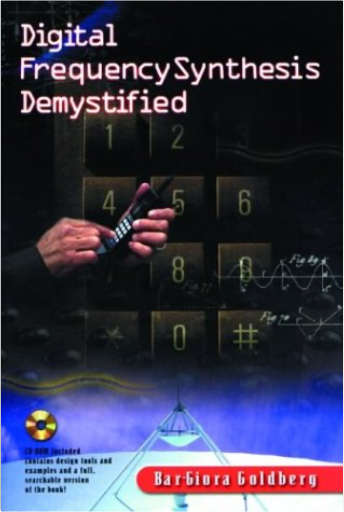
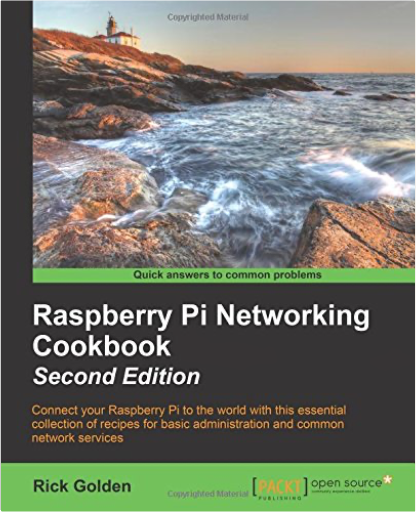
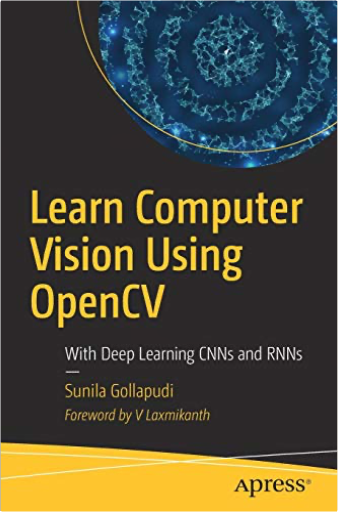
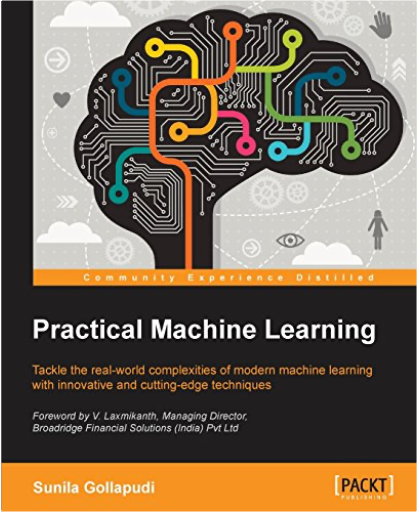
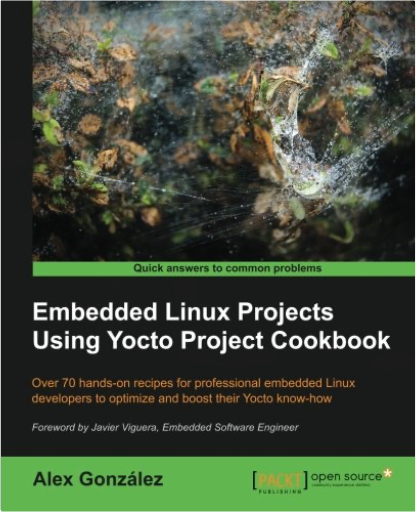
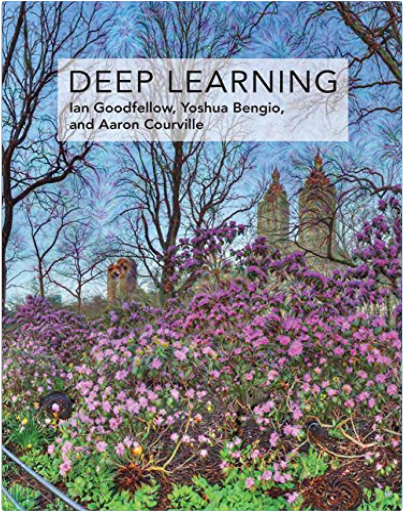
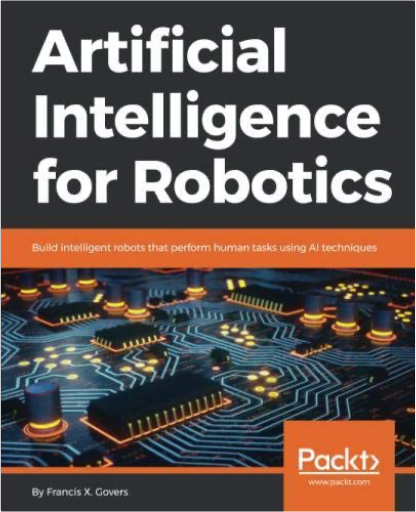
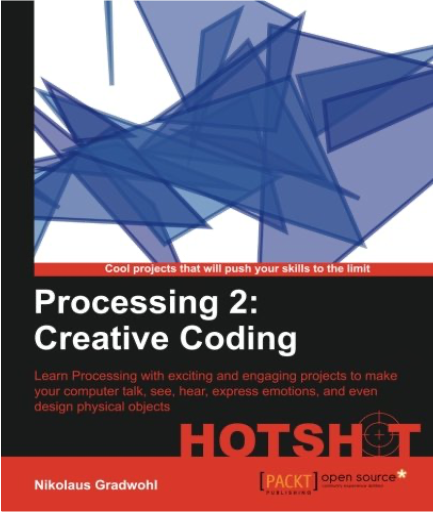
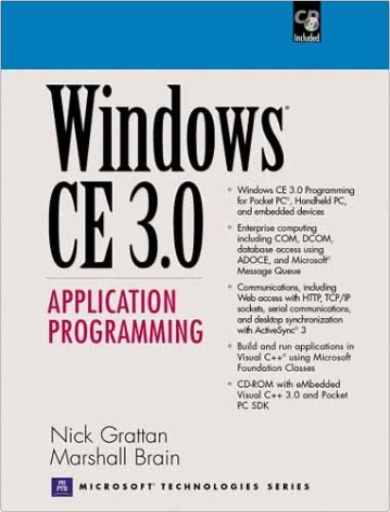
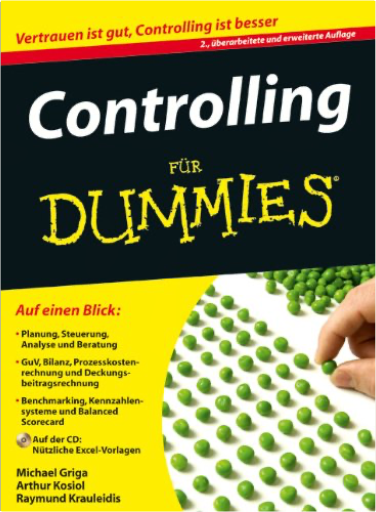
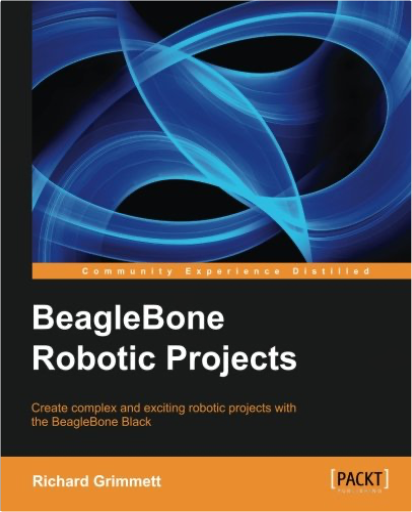
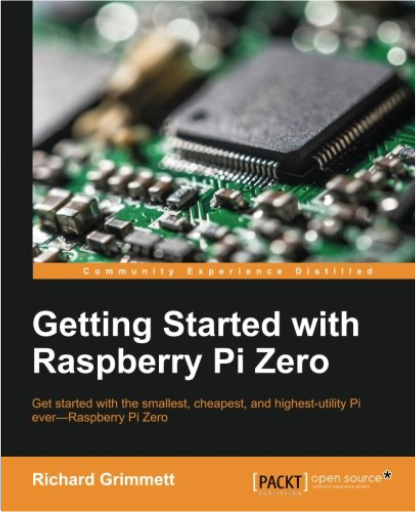
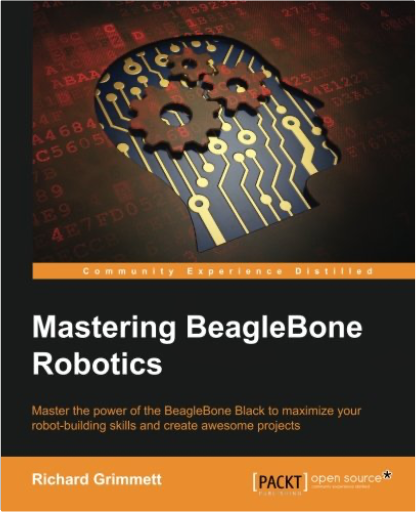


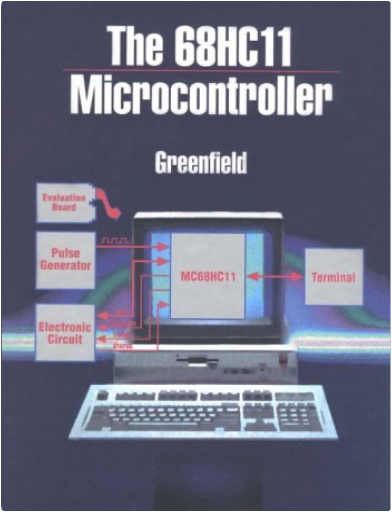
 Made with Delicious Library
Made with Delicious Library